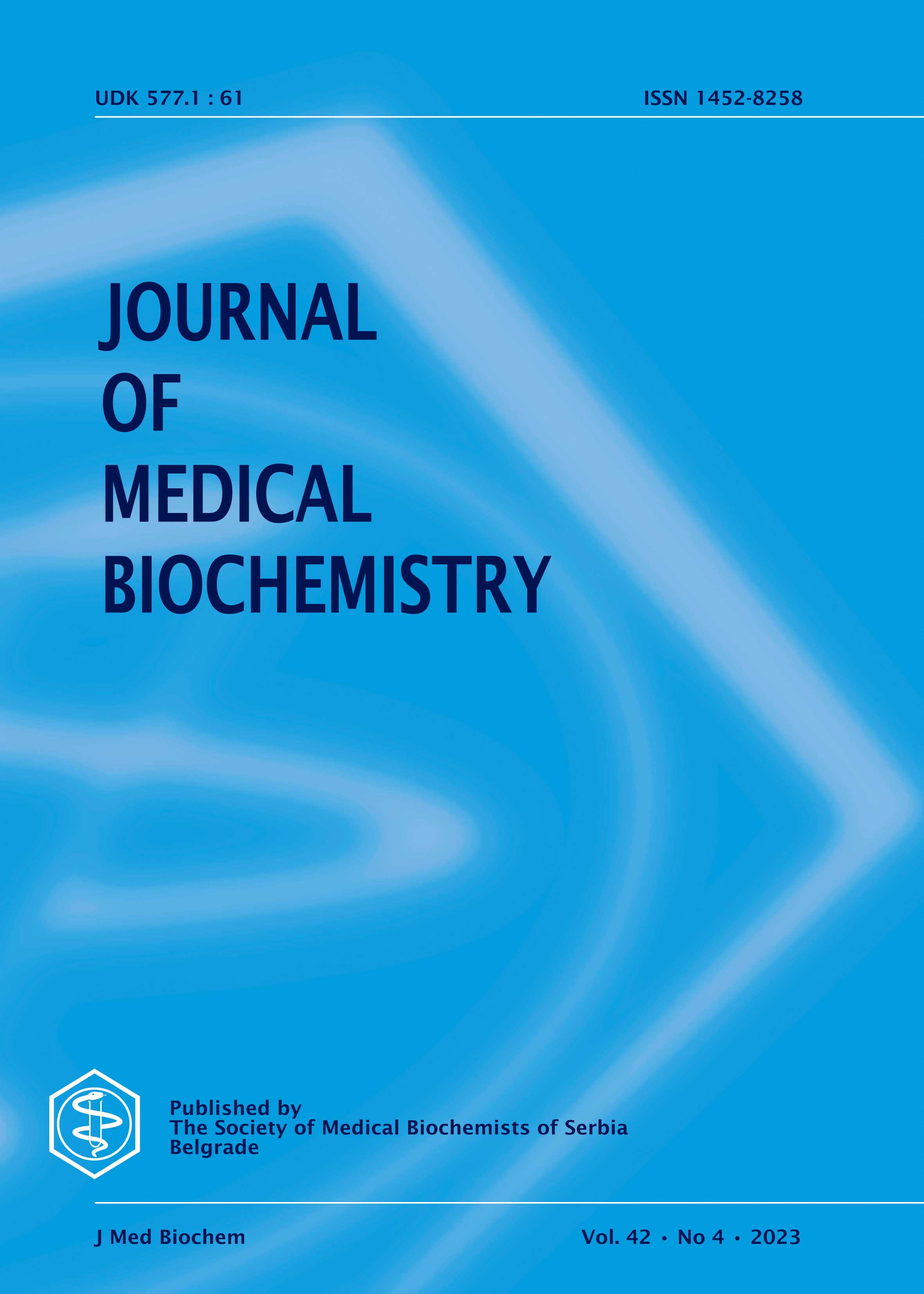Genski polimorfizam MTHFR rs1801133 i podložnost leukemiji u detinjstvu kod kineske populacije
MTHFR rs1801133 and childhood leukemia
Sažetak
Background: The purpose of this study is to investigate the genotype and allele distribution of MTHFR rs1801133 in the Chinese population, and to analyze the relationship between gene polymorphism of MTHFR rs1801133 and risk of childhood leukemia.
Methods: Blood samples and clinical data of childhood leukemia cases (n=1132) and age-matched healthy controls (n=1053) were collected. Genotypes and allele distribution of MTHFR rs1801133 were detected by PCR-RFLP. Logistic regression model was generated to analyze the relation between MTHFR rs1801133 and susceptibility to childhood leukemia and the chemotherapy response.
Results: Age, sex, BMI and family history of tumor were comparable between childhood leukemia cases and healthy controls. Genotypes and allele distribution of MTHFR rs1801133 were remarkably correlated to the risk of childhood leukemia. Genotype risk of MTHFR rs1801133 was parallel to the susceptibility to childhood leukemia. Specifically, compared with people carrying AA allele of MTHFR rs1801133, higher risk of childhood leukemia may occur in people carrying AG+GG allele of MTHFR rs1801133 with a younger age (<15 years) or complete remission from chemotherapy.
Conclusions: MTHFR rs1801133 gene polymorphism has a significant correlation with childhood leukemia. It is an important genetic susceptibility gene of childhood leukemia. The reliability of the results requires to be further validated by the high-quality research involving a large sample size in multi-center hospitals.
Reference
1. Harris MH, Czuchlewski DR, Arber DA, Czader M. Genetic Testing in the Diagnosis and Biology of Acute Leukemia. Am J Clin Pathol 2019; 152(3): 322-46.
2. Juliusson G, Hough R. Leukemia. Prog Tumor Res 2016; 43(87-100.
3. Cernan M, Szotkowski T, Pikalova Z. Mixed-phenotype acute leukemia: state-of-the-art of the diagnosis, classification and treatment. Biomed Pap 2017; 161(3): 234-41.
4. Rose-Inman H, Kuehl D. Acute leukemia. Emerg Med Clin N Am 2014; 32(3): 579-96.
5. Deschler B, Lubbert M. Acute myeloid leukemia: epidemiology and etiology. Cancer-Am Cancer Soc 2006; 107(9): 2099-107.
6. Bodet-Milin C, Kraeber-Bodere F, Eugene T, Guerard F, Gaschet J, Bailly C, et al. Radioimmunotherapy for Treatment of Acute Leukemia. Semin Nucl Med 2016; 46(2): 135-46.
7. Wang F, Lv H, Zhao B, Zhou L, Wang S, Luo J, et al. Iron and leukemia: new insights for future treatments. J Exp Clin Canc Res 2019; 38(1): 406.
8. Devine SM, Larson RA. Acute leukemia in adults: recent developments in diagnosis and treatment. Ca-Cancer J Clin 1994; 44(6): 326-52.
9. Rashidi A, Weisdorf DJ, Bejanyan N. Treatment of relapsed/refractory acute myeloid leukaemia in adults. Brit J Haematol 2018; 181(1): 27-37.
10. Stessman J, Maaravi Y, Hammerman-Rozenberg R, Cohen A, Nemanov L, Gritsenko I, et al. Candidate genes associated with ageing and life expectancy in the Jerusalem longitudinal study. Mech Ageing Dev 2005; 126(2): 333-9.
11. Lao-Sirieix P, Caldas C, Fitzgerald RC. Genetic predisposition to gastro-oesophageal cancer. Curr Opin Genet Dev 2010; 20(3): 210-7.
12. Jiao Z, Li D. Lack of association between MHTFR Glu429Ala polymorphism and breast cancer susceptibility: a systematic review and meta-analysis of 29 research studies. Tumour Biol 2013; 34(2): 1225-33.
13. Xu W, Zhang H, Wang F, Wang H. Quantitative assessment of the association between MHTFR C677T (rs1801133, Ala222Val) polymorphism and susceptibility to bladder cancer. Diagn Pathol 2013; 8(95.
14. Kholodar SA, Novopashina DS, Meschaninova MI, Lomzov AA, Venyaminova AG. Multipyrene tandem probes for detection of C677T polymorphism in MTHFR gene. Nucleic Acids Symp Ser (Oxf) 2009;53): 143-4.
15. Catalano D, Trovato GM, Ragusa A, Martines GF, Tonzuso A, Pirri C, et al. Non-alcoholic fatty liver disease (NAFLD) and MTHFR 1298A > C gene polymorphism. Eur Rev Med Pharmaco 2014; 18(2): 151-9.
Sva prava zadržana (c) 2023 Yin Peng, Lin Wu, Chengjun Wang

Ovaj rad je pod Creative Commons Autorstvo 4.0 međunarodnom licencom.
The published articles will be distributed under the Creative Commons Attribution 4.0 International License (CC BY). It is allowed to copy and redistribute the material in any medium or format, and remix, transform, and build upon it for any purpose, even commercially, as long as appropriate credit is given to the original author(s), a link to the license is provided and it is indicated if changes were made. Users are required to provide full bibliographic description of the original publication (authors, article title, journal title, volume, issue, pages), as well as its DOI code. In electronic publishing, users are also required to link the content with both the original article published in Journal of Medical Biochemistry and the licence used.
Authors are able to enter into separate, additional contractual arrangements for the non-exclusive distribution of the journal's published version of the work (e.g., post it to an institutional repository or publish it in a book), with an acknowledgement of its initial publication in this journal.

